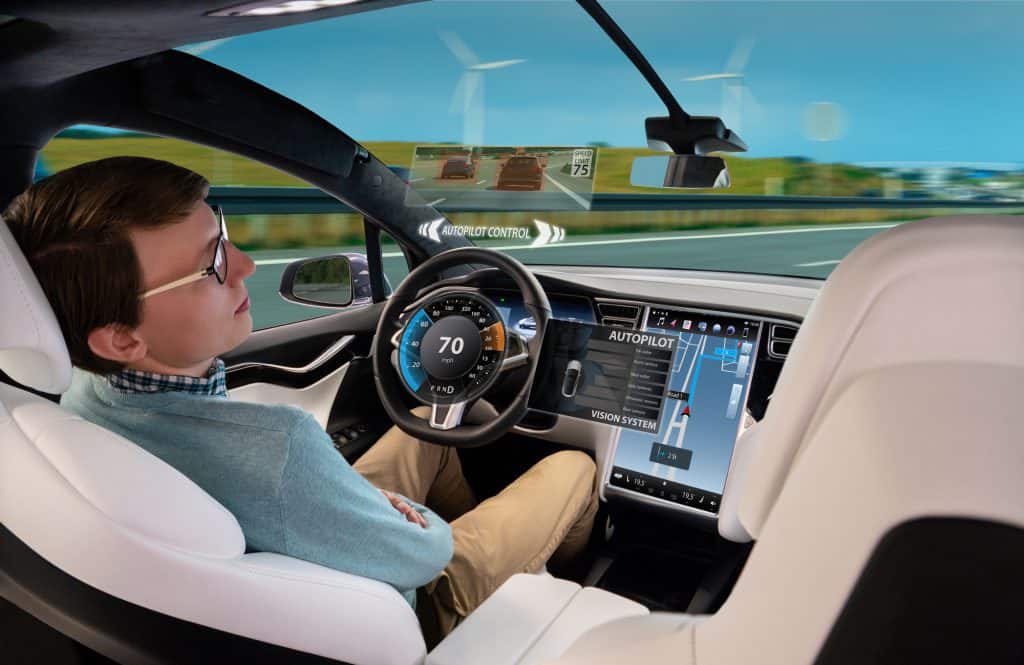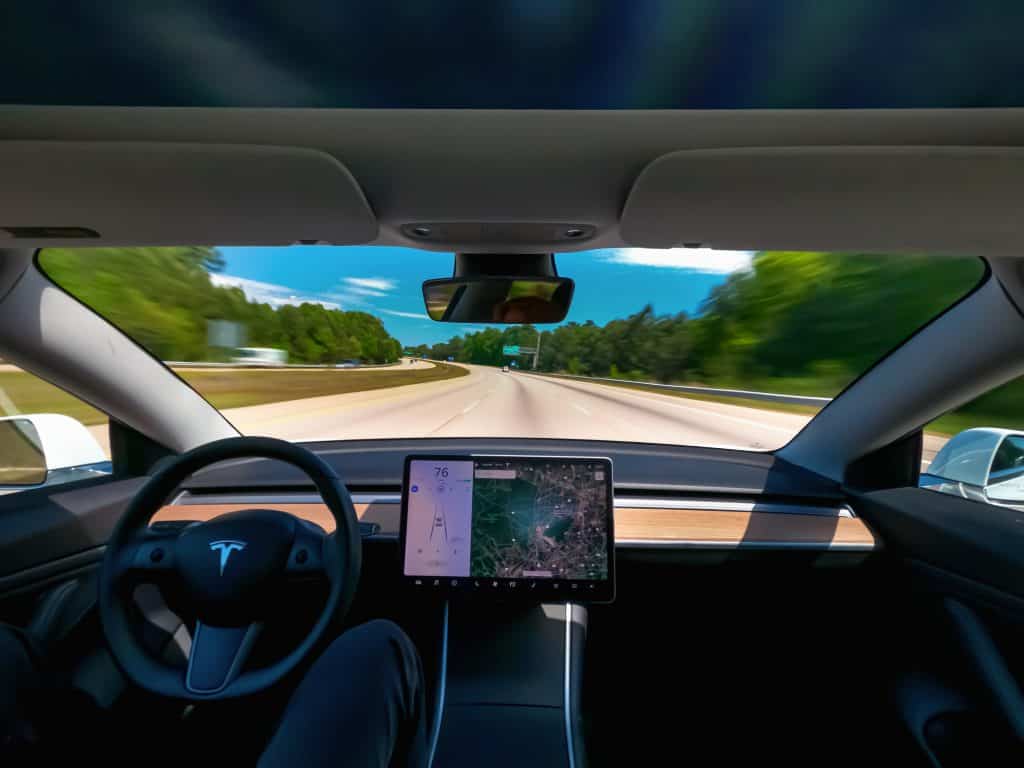There’s no-one who can reasonably deny that Tesla’s Autopilot technology is truly amazing and certainly sector-leading. Where other brands like GM, Audi and Ford have all shied away from going too far with their autonomous driving technology, Tesla was bold enough to make it a common feature and have extolled its virtues since its first creation back in 2015.
Is Tesla AutoPilot Able to Drive You Home Drunk?

To this core question, the answer is technically it might be able to, but it would be against the law to do so. First of all, Tesla’s Autopilot hasn’t yet made it to the SAE level 3 of autonomy in self-driving cars, although its new “Full Self-Driving computer” that arrived in 2020 is very close. It is currently at level 2.
Level 2 is the third stage of six in the SAE scale of autonomous driving capabilities. Level 2 technology still absolutely requires input from a human driver to work safely:
On top of that, Tesla’s own requirements still insist that a competent legal-to-drive human is sitting behind the wheel and watching the road while Autopilot is engaged.
Much evidence has already been shared on YouTube of Tesla drivers taking full advantage of their Autopilot, and with a lot of success. This is why we said first that provided you entered your correct home address into the navigation system and were able to start the car and get it to start moving, the Autopilot system could safely navigate you home. The problem however is all the legal problems that occur on the way.
Perhaps the most important issue is that to activate Autopilot you would have to start the car and begin moving before you can activate Autopilot by pulling the right stalk down twice while already on the road. Autopilot is a system that takes over your driving after you’re established a speed and direction. It can increase and reduce speed, and can handle basic steering, but it is not fully capable in all situations, which is why a totally compos mentis driver has to be in the driver’s seat.
What Does Tesla Say About Autopilot?
Even Tesla’s own guidelines on Autopilot are very clear. Here are some important extracts which explain why Tesla’s Autopilot couldn’t legally take you home when you are drunk:
- “Do I still need to pay attention while using Autopilot? Yes. Autopilot is a hands-on driver assistance system that is intended to be used only with a fully attentive driver.”
- “[Autopilot] does not turn a Tesla into a self-driving car nor does it make a car autonomous.”
- “Before enabling Autopilot, you must agree to ‘keep your hands on the steering wheel at all times’ and to always ‘maintain control and responsibility for your car.’”
In addition to this, Tesla reminds us that we can interrupt Autopilot any time by using the steering wheel, applying the brakes or using the activation stalk to deactivate it again. To do any of these, you would have to be capable of driving, and a drunk person is not legally capable of driving.
Furthermore, a drunk person is also not allowed to be in charge of a vehicle, and Tesla makes it clear that activation of Autopilot does not make a Tesla autonomous. In other words, activation of Autopilot is not a transfer of responsibility from you the driver to Tesla the car. You’re not Nightrider.
Limitations of Autopilot

To further explain why Autopilot can’t drive you home drunk, it’s important to also understand the technical limitations of the system. Even with the 2020 upgrade to Full Self-Driving (FSD) mode, which has cost some Tesla owners $10,000 for the package, it doesn’t create a fully self-driving car. It’s amazing that Tesla is allowed to call it Full Self-Driving mode, when even the company admits that despite all the fanfare, FSD in reality is still only SAE level 2. Tesla’s own associate general counsel, Eric C. Williams said in December 2020:
“Currently neither Autopilot nor FSD capability is an autonomous system, and currently no comprising feature, whether singularly or collectively, is autonomous or makes our vehicles autonomous.”
Eric C. Williams, Tesla, December 2020
He went on further to rebut Musk’s claim that Tesla was “very close to level 5 autonomy”:
“As you know, Autopilot is an optional suite of driver-assistance features that are representative of SAE level 2 automation… Full Self-Driving (FSD) capability is an additional optional suite of features that builds from Autopilot and is also representative of SAE level 2.”
Eric C. Williams, Tesla, December 2020
There we have straight from the legal eagle’s beak — even the very latest and very expensive so-called “Full Self-Driving” mode is actually an evolution within SAE level 2. Tesla hasn’t even reached level 3 yet, a feat currently only achieved by Honda with their Japan-only Honda Legend. This car won’t even be sold en-masse just yet. Instead, it is being reserved and trialed with 100 lease models.
There are further limitations on Autopilot that need to be understood. Returning to Tesla’s own guidelines, Autopilot is impaired from doing its job by:
- Poor visibility due to heavy rain, snow or dog
- Bright light from oncoming vehicles using full beam headlight
- Bright light from direct sunlight; glare on wet roads, etc.
- Mud, ice, snow
- Interference or obstruction by objects mounted onto the vehicle (e.g., bike rack)
- Obstruction caused by applying excessive paint or adhesive products to car’s surface
- Narrow, high curvature or winding roads
- Damaged or misaligned bumper
- Interference from other equipment generating ultrasonic waves
- Extreme heat and cold
This is a list of factors that impair Autopilot’s ability to do its job, and Tesla admits that there could be others. Add to that list the visual and mental impairment that comes from heavy consumption of alcohol, and you have a recipe for disaster.
Conclusion: Autopilot and FSD are ADAS Features, Nothing More
Remember that Tesla’s Autopilot, amazing as it undoubtedly is, is still just another ADAS feature. Granted, it’s likely among the most sophisticated and fantastic ADAS features out there, not to mention expensive, but it is still just that, an assistance feature. Tesla still has many levels of automotive autonomy to climb before Musk realizes his goal. We have no doubts he’ll get there eventually, but in the meantime it’s important that we don’t fall for marketing hype and reckless YouTube demonstrations.